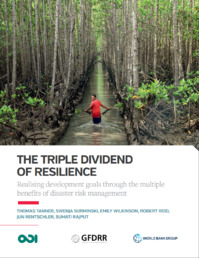The Triple Dividend of Resilience: Realising development goals through the multiple benefits of disaster risk management
| Author: | Tanner, Thomas; Surminski, Swenja; Wilkinson, Emily; Reid, Robert; Rentschler, Jun; Rajput, Sumati |
| Language: | English |
| Published By: | Global Facility for Disaster Risk Reduction at the World Bank and Overseas Development Institute |
| Published date: | 2015 |
×
Thank you for recommending this resource.
Share your resources

Are you working to better understand and build community climate resilience? Others can benefit from your knowledge.
Do you have any question?

Do you need practical advice on something not currently included in the climate solutions catalogue?



Comments